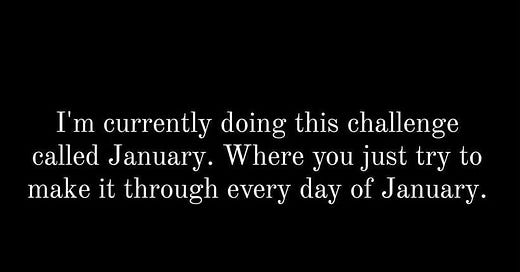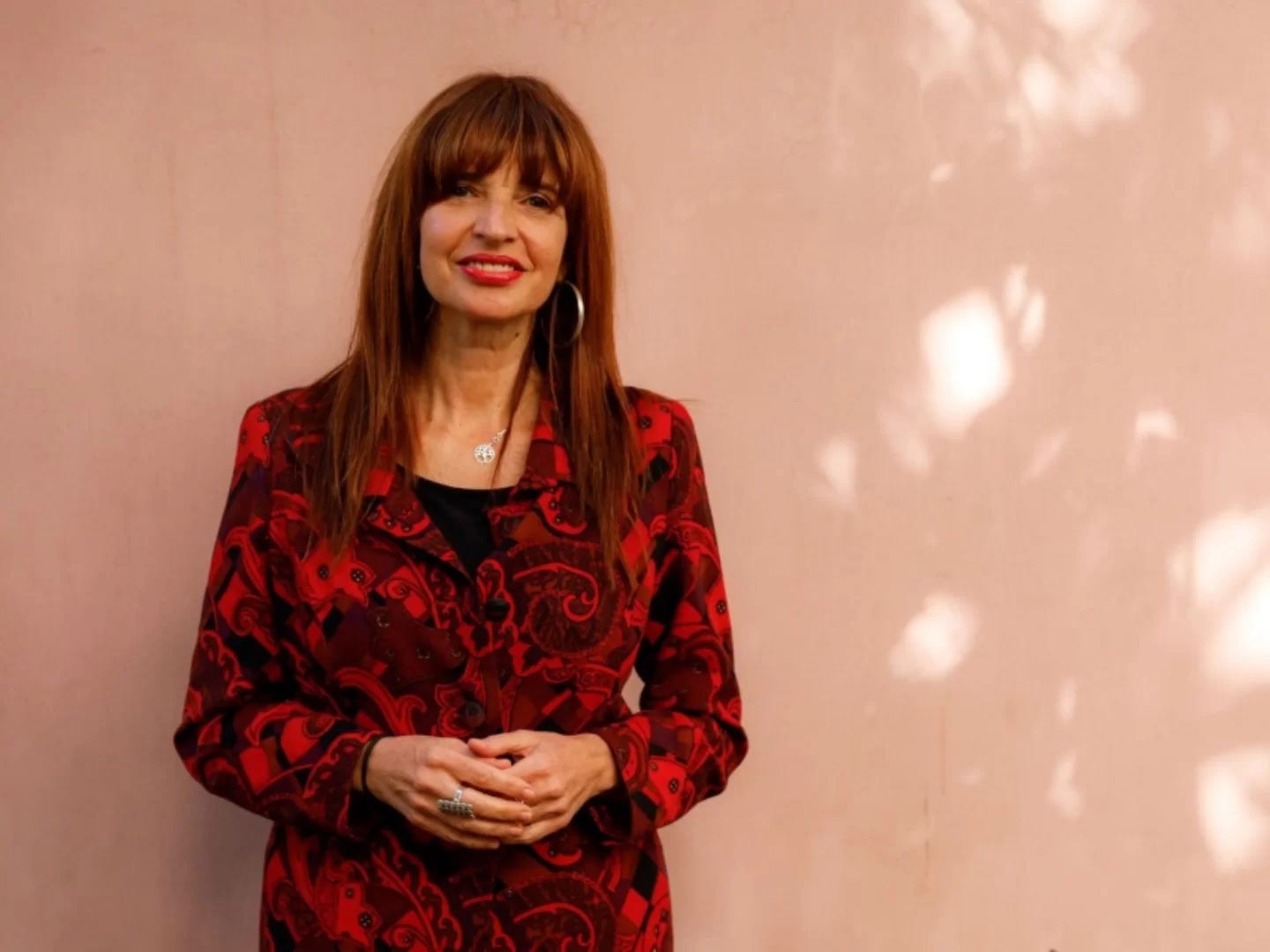^The meme above^ appeared numerous times in my text threads this past week as I noticed my nervous system having to work harder to stay regulated. No surprise perhaps, given the overwhelming amount shock and chaos happening pretty much everywhere.
Observing my own experience, I realized I was immersing myself in strife--reading and thinking about it continually to understand how to cope, both personally and globally. My body signaled the need for a shift using all the classic fight-or-flight alarms, beginning with myopia and a shrunken attention span. My attention clearly needed to be taken on even more bike rides, and in the realm of study, to flip from focusing on problems and trauma to looking for solutions and healing.
This led to my most recent deep dive into utopian thought. The exploration began as a casual revisit of the topic that had captivated me as a teen lit up by the ideas of Buckminster Fuller. This utopian research soon shaped itself from a flat 2-dimensional inquiry into a living framework that offered me a place to reflect upon the things humans wish for and need. One aspect of this post is an guided tour around some of this framework.
Alongside the joy of discovery came the familiar inner voices of cynicism and doubt warning me--and if I’m honest, even shaming me--about the naivete of utopian leanings as well as the belief things can truly get better.
I immediately wanted to shed these voices like an itchy sweater, and stayed with the utopian reading. Under stress, these itchy, externally imposed voices only compounded the static I was already overwhelmed by. So, instead of ignoring or trying to stifle their warnings, I kept one ear open to them as worthwhile yet overly confident contrarians. Once the volume was lowered on these voices, they proved helpful.
This post is also an introduction to a new (to me) way of working with utopia as a tool. I’m sharing it in the hope it enlivens the bright and audacious dreamer and doer in you.
_____
In a recent article in Psyche magazine, Caitlin Rajan writes about how we need utopian thinking “now more than ever”. I’d been feeling similarly while sitting with the notion that indulging in utopian thinking during scary times can be not only a comfort, but a radical act in the face of knowing that utopia can never be fully reached.
DYSTOPIA
We live in the shadow of our ancestors’ failed utopian experiments, with tragic dystopian outcomes and horrific atrocities, the most glaring historical example being former Nazi Germany. Today, parts of Syria, Venezuela, Yemen, Somalia and North Korea, among other countries, are often mentioned as having aspects of dystopian society due to their struggles with political instability, humanitarian crises and lack of basic rights.
Out of real world dystopia rises dystopian fiction--most recently, The Hunger Games series of young adult novels by Suzanne Collins, and three definitive 20th century works--Brave New World by Aldous Huxley (1932), 1984 by George Orwell (1949) and Fahrenheit 451 by Ray Bradbury (1953).
Dystopian fiction is often thought of as an inverted “Hero’s Journey” where the would-be heroes remain unredeemed after imposing their harmful autocratic visions of utopia on others and failing to learn the right lessons from the resistance that rises against them.
UTOPIA
Utopia is a term coined by Thomas More in his book Utopia in the year 1516. From the Greek “ou” (not) and “topos” (place), utopia means “not-place” or “nowhere.” Thomas More imagines this not-place as a flourishing island society where harmony, equality, and justice are the norms. He makes the case that a society like his symbolic island is worth thinking about despite its being impossible to build.
More’s Utopia is both a satire of the human quest for perfection and an earnest call for a better world. The tension More found between utopia as a worthwhile dream and utopia as an impossible project remains central to its legacy and probably lies at the crux of our reasons for continued fascination with finding it.

SOCIAL DREAMING - UTOPIAN DREAMING
Researching modern utopian ideas led me to the term “social dreaming” coined by sociologist Lyman Tower Sargent. Social dreaming “is a practice of sharing and working with dreams within a social space.” Social dreaming is both a noun and a verb. Social dreamings (noun) are opportunities to envision alternatives to existing conditions, whether through literature, art, philosophy or activism. The first social dreaming was held in London at the Tavistock Institute in 1982. The act of social dreaming (verb) is how the great artists and reformers have always served humankind by illuminating more effective and meaningful ways to live, though many of these social dreamers were loners, and rarely, if ever, dreamed out loud in collaboration with others.
From the concept of social dreaming, the idea of “utopian dreaming” shaped itself in my mind despite the term sounding kind of frivolous or insipid, like a nap you might take on a rainbow cloud while unicorns braid your hair and whisper affirmations like, “You’re doing amazing, sweetie”. This notion of utopian dreaming is really just a less limited version of social dreaming where the constraints of practicality are temporarily suspended, allowing the imagination to fly freely and seek out new territories without its wings being clipped by realistic concerns.
MAPPING UTOPIANISMS
I have also become fascinated by the work of utopian theorist Fátima Vieira, a faculty member at the University of Porto. Vieira oversees a project called “Mapping Utopianisms”, wherein her idea of utopia is less a blueprint to be built and more an intellectual exercise to evolve through. It’s also a tool for critiquing the present and imagining alternative futures.
For Vieira, the value of (what I’m calling) utopian dreaming is about challenging the status quo and pushing boundaries. Her work points to the ways our world’s systems are often designed to appear larger and more unyielding than they actually are, so that they seem to loom over us, making us feel comparatively smaller and more deferential to them. Her work also gathers evidence of our species’ infinite creativity, adaptability and ability to dream boldly while also thinking critically.
PROTOPIA
Futurist Kevin Kelly offers a third option to the binary of utopia and dystopia. His concept of “protopia” (“pro” as in progressive and “topia” as in place) emphasizes small, incremental and iterative steps toward progress rather than far-reaching perfection as a more realistic and humane pathway to a better future. Other protopian dreamers are Monica Bielskyte, founder of Protopia Futures and Micha Narberhaus, founder of Protopia Lab.



Bielskyte focuses on integrating protopian values into media as a consultant with science fiction TV and film creators like Ryan Coogler, director of “Black Panther: Wakanda Forever”.
Narberhaus’ Protopia Lab is an non-profit think tank. They gather “open-minded people from across the Western world” in an exercise of “trial and error, an evolutionary search process towards protopia.” They define protopia as “a vision that takes into account multiple perspectives, acknowledges that there are always many trade-offs to consider and avoids throwing the baby out with the bathwater when making changes to the system.”
OUR CURRENT SITUATION: NO CLEAR COUNTERPOINT
So, here we stand at the edge of January 2025, shielding ourselves from--and in some cases fighting--fires, floods, corruption, abuse and injustice. Our society seems currently without a clear counterpoint to our fear and despair.
It’s understandable to find the notion of utopian dreaming naive amidst all the negativity these catastrophes generate. It’s also sensible to remember we’re capable of building a world where collaboration and innovation are more supported than division and stagnation.
Physical and virtual spaces for utopian dreaming already exist in places like the Tavistock Institute and Protopia Lab, mentioned above. While we need spaces where people can safely experiment with bringing wild dreams to life, we don’t need to build special learning centers or found new institutions.
Many of us already live utopian dreaming in many spaces we occupy. Perhaps we just need to do so more boldly and encourage others to do the same. We dare to share bold ideas over dinner, at work, in school, community spaces, the marketplace, the streets and places of worship. We not only speak these dreams verbally, but in the example of our actions. We rough draft bold ideas by mulling them over when alone in our cars or lying in bed at 3am. Deep fulfillment is often found from these conversations with ourselves and others, even when we don’t work to bring these ideas to life.
We also, in our better moments, challenge biases in ourselves and others as a way of caring for our pluralistic world where diverse perspectives coexist. If, in the past, we’ve normalized the opposite kind of behavior--in discouraging people from dreaming or speaking truth to power--we can normalize doing better by ourselves and one another, as many of us already do much of the time.
Humans are made for this kind of hopeful orientation, not in denying reality, but engaging with it more creatively and courageously.
But, of course hope isn’t the endgame. Dreams are only the beginning and remain forever abstract until realized through conscious effort aka embodiment.
EMBODIED UTOPIAN DREAMING
By embodiment I mean the layered, unfolding process that begins when thought and feeling flow together. We’re more embodied when we feel what we also intellectualize or when our intellect aligns with--rather than blocks--what we feel. When thought and feeling unify in whatever we’re doing, we’re less likely to second guess ourselves, and more capable of actualizing our ideas through simple, everyday action.
Thoughts are real but fleeting and can disappear without a trace. Thoughts keep us living only from the neck up, while feelings--our emotions and bodily sensations--are more tangible, grounding us in full-body presence. Feelings mirror, color and animate our thoughts with lived experience and fuel our inspiration to act.
Embodied utopian dreaming is crucial in the realm of justice. Our yearning for justice asks us to address the embodied trauma passed down by old dystopian systems. Healing trauma begins by recognizing the body as a site of sensation, memory, and transformation. Once the body is involved, we can begin to live as our full selves, not as our trauma patterns have shaped us. Likewise, healing societal trauma--whether rooted in racism, sexism, colonialism, or other oppression--means seeing the collective body as a site of shared transformation, beyond the harmful myths dystopian systems have imposed.
Embodying our dreams can also reconnect us with our ancestors' understanding of the body as part of a larger ecosystem where personal wellbeing depends on bodily health and societal wellbeing--both of which depend on the health of our planet.
Five centuries ago, Thomas More recognized that the “not-place” of utopia will never happen in our world of overwhelm. And writing to you today, I wonder: if the worst-case scenario occurs, where we’re finally ready to save the world only to learn that we waited too long and it’s too late for anything to be done, would our dreams of a better world still be worth embodying?
Maybe don’t answer too quickly. You’re welcome to pause and reflect. Be as honest with yourself as you are able at this time.
(exhale)
LINKS
Listen to Audre Lorde read “Uses of the Erotic: The Erotic as Power” (medicine for our times)
Listen to James Baldwin reading his speech “The Moral Responsibility of the Artist” (also medicine for our times)
Someday I’d like to visit the Dr Martin Luther King Jr School Museum of Contemporary Art (KSMoCA), a museum and public school that connects students with internationally renowned contemporary artists through collaborative workshops, exhibitions, artists lectures and site-specific commissions.
For those in the LA area and able to volunteer: here’s a masterlist of in-person volunteer opportunities
“This is Humanity” is providing assistance to front/second line farmworkers, day laborers, essential workers and families impacted by fires in Los Angeles. Donate directly here.
If you want to raise happy, successful kids, consider this: Scientists Tracked 1,000 Kids for 40 Years. This Was the No. 1 Predictor of Financial Success One of the longest-running studies of child development ever couldn’t be clearer.(Hint: it’s not about academic performance or work ethic.)
“I do not feel like a narrative subject at all anymore, but an unstable bundle of cells, some of which are deviant and trying to kill me.” Really thoughtful essay, how a cancer diagnosis helped artist Vijay Masharani”s view of self become more embodied.
Group chats rule the world. Gift link, NY Times.
Loving the collage art of Casey Niccoli. Were you ever into Jane’s Addiction album covers? That was Casey.
Artists, Curators, Engineers, and More Weigh In on How You Can Slow Down and Boost Your Creativity. Lots of cool, creative people of all shapes here, suggesting so many interesting things, my imagination got a boost just from looking and reading.
I was really struck by these techniques for naming the elephant in the room. They could work for family, friends and communities and work. The Art of Calling Out Room Dynamics. Also includes the psychology behind the techniques and why they work.
A whole cookbook about dates (the food). I want!!
Prompts inspired by David Lynch. This one is my fave: “We only dream of images we have inside us.” What’s something that’s currently being limited by a lack of imagination?
That’s it for now. Thanks for being here and reading.
With Love + Dreaming,








Great post and links! Powerful ... "His concept of “protopia” (“pro” as in progressive and “topia” as in place) emphasizes small, incremental and iterative steps toward progress rather than far-reaching perfection as a more realistic and humane pathway to a better future."